The weakness afflicting the US dollar since its questionable labour market report continued overnight. Indeed, DXY is threatening to break down as EUR surges:
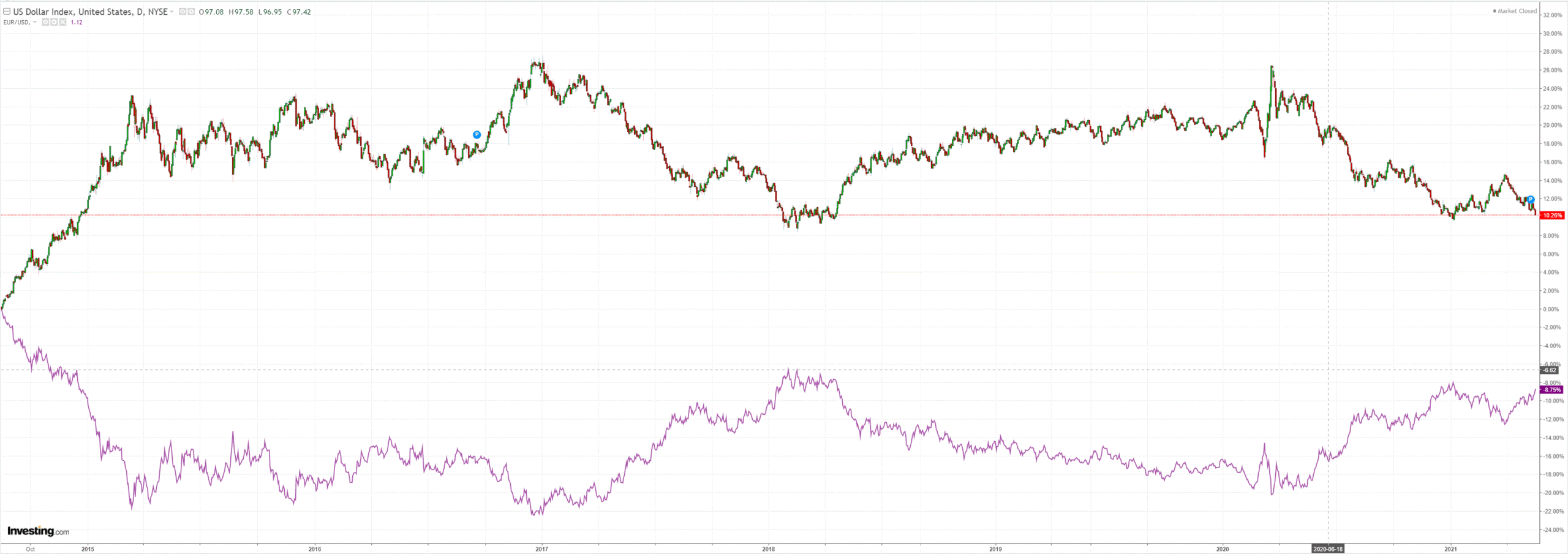
The Australian dollar has badly lagged the DXY move lower and is fading against EUR:
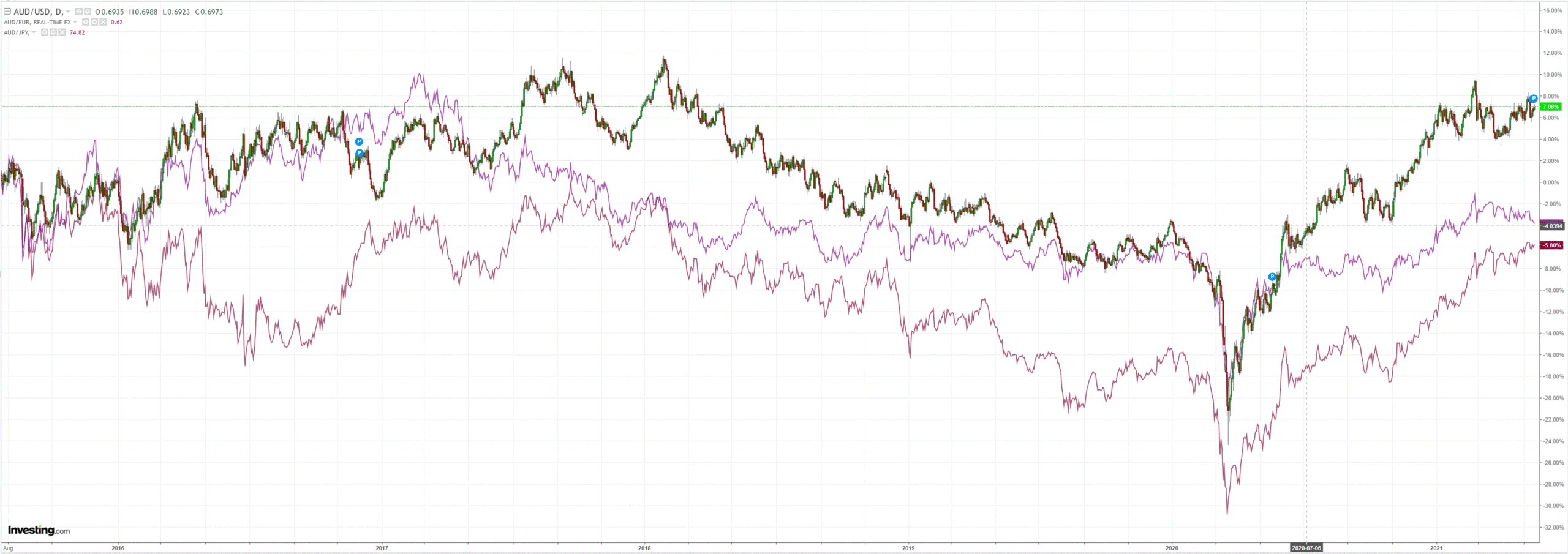
But a falling DXY is always fun for dirt:
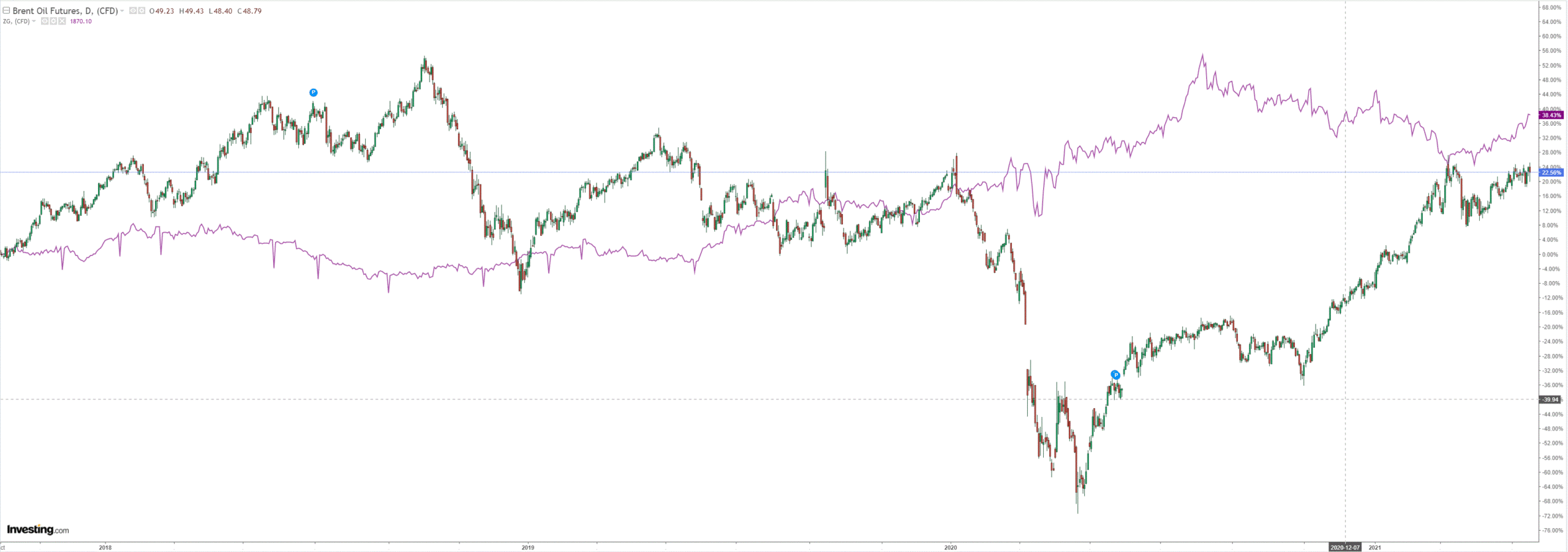
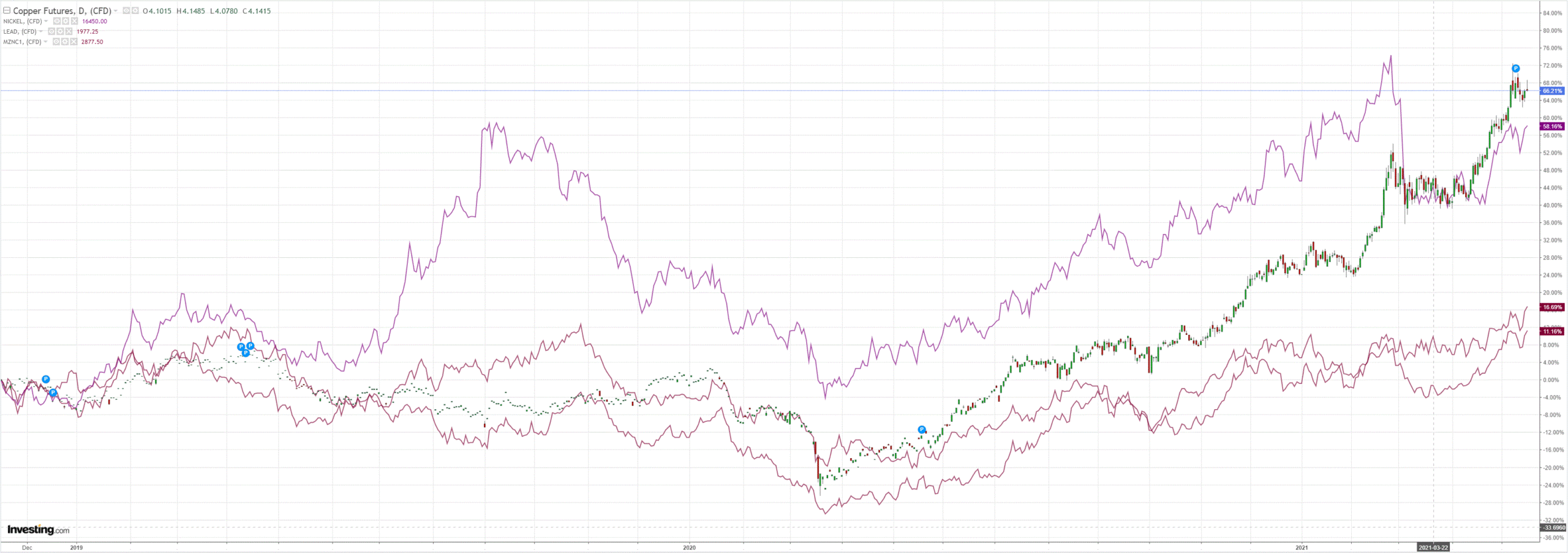
Not so big miners as China jumps up and down about iron ore:
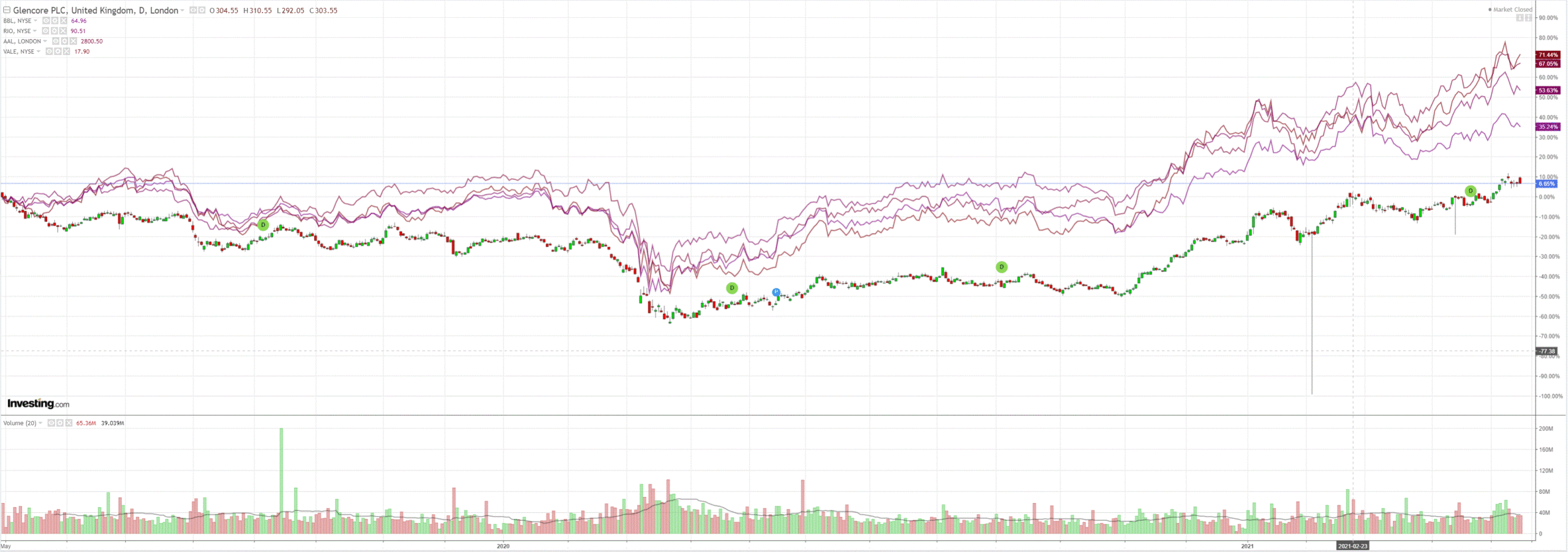
EM stocks gapped higher:
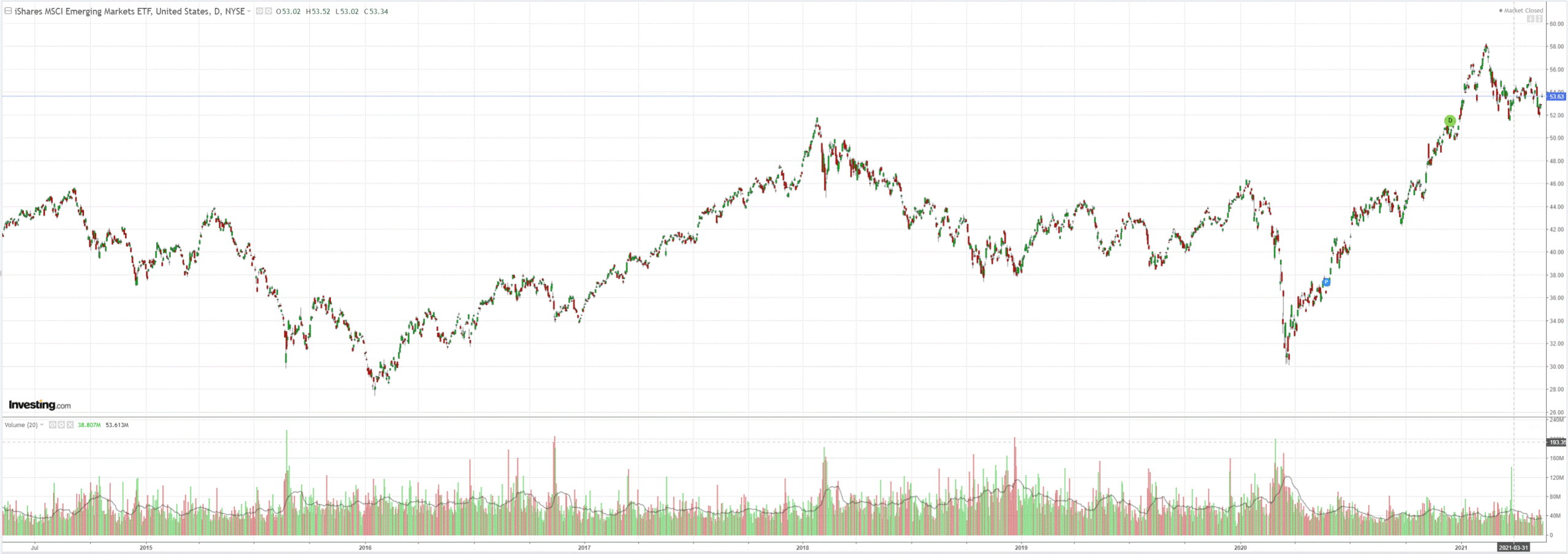
Junk is dandy:
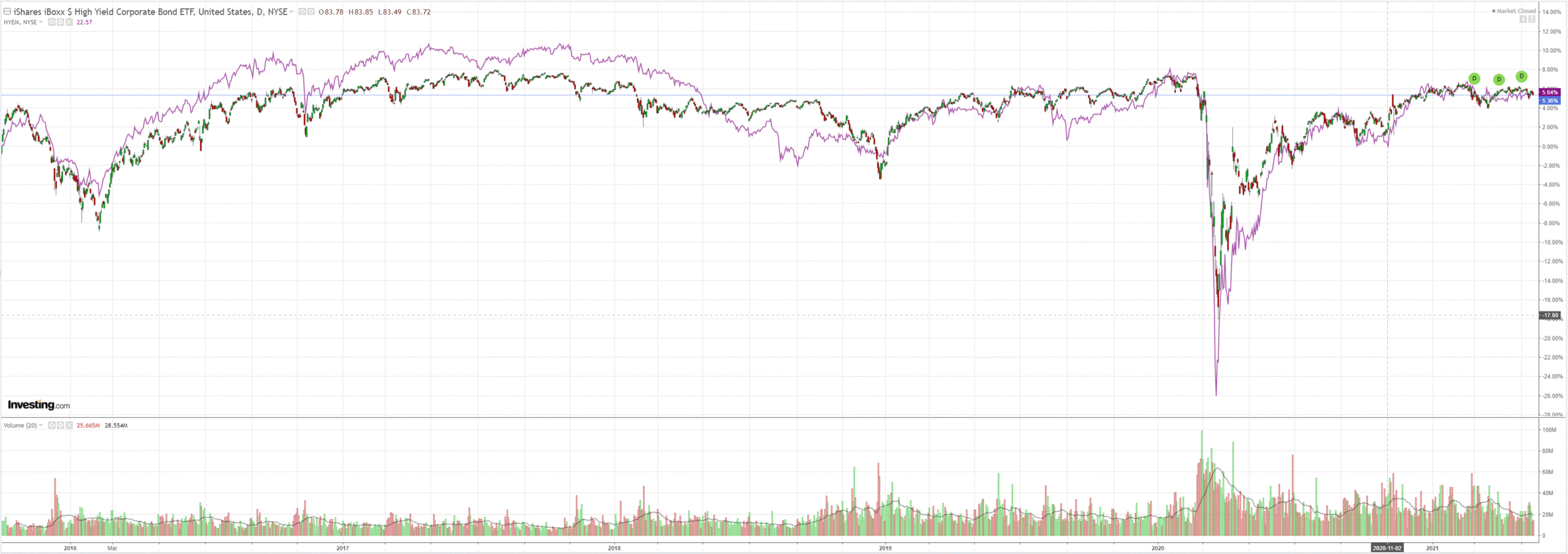
Yields were mostly soft:
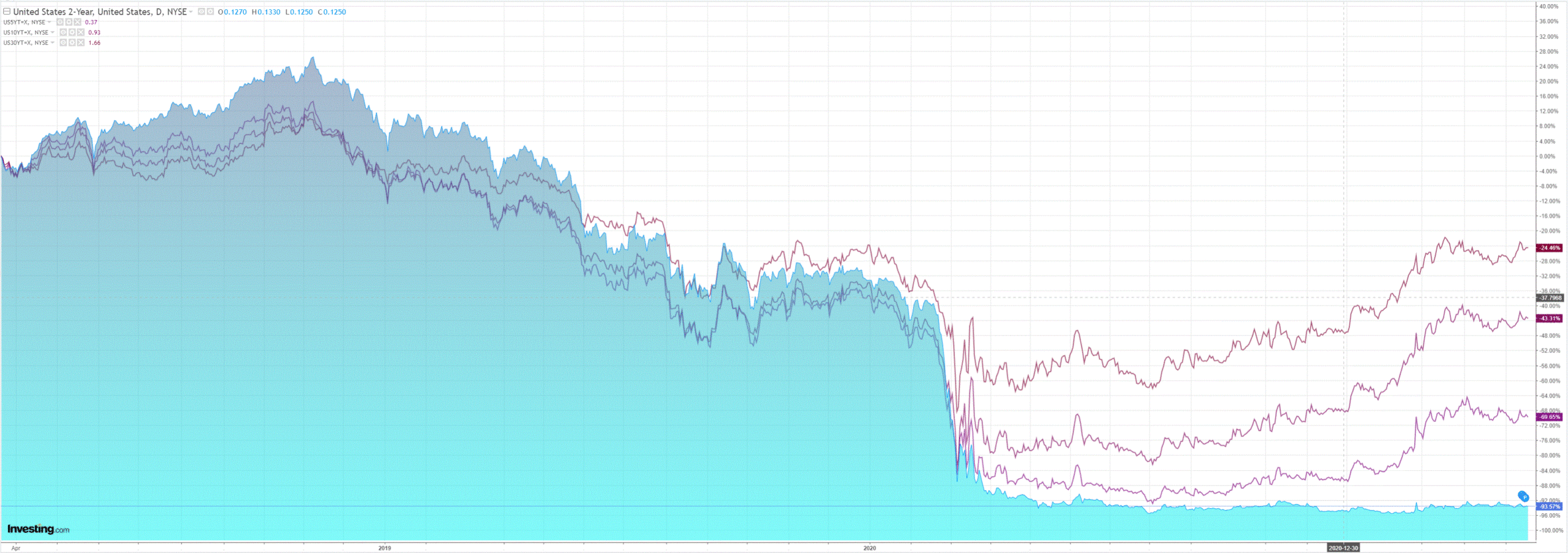
But growth led stocks lower anyway:
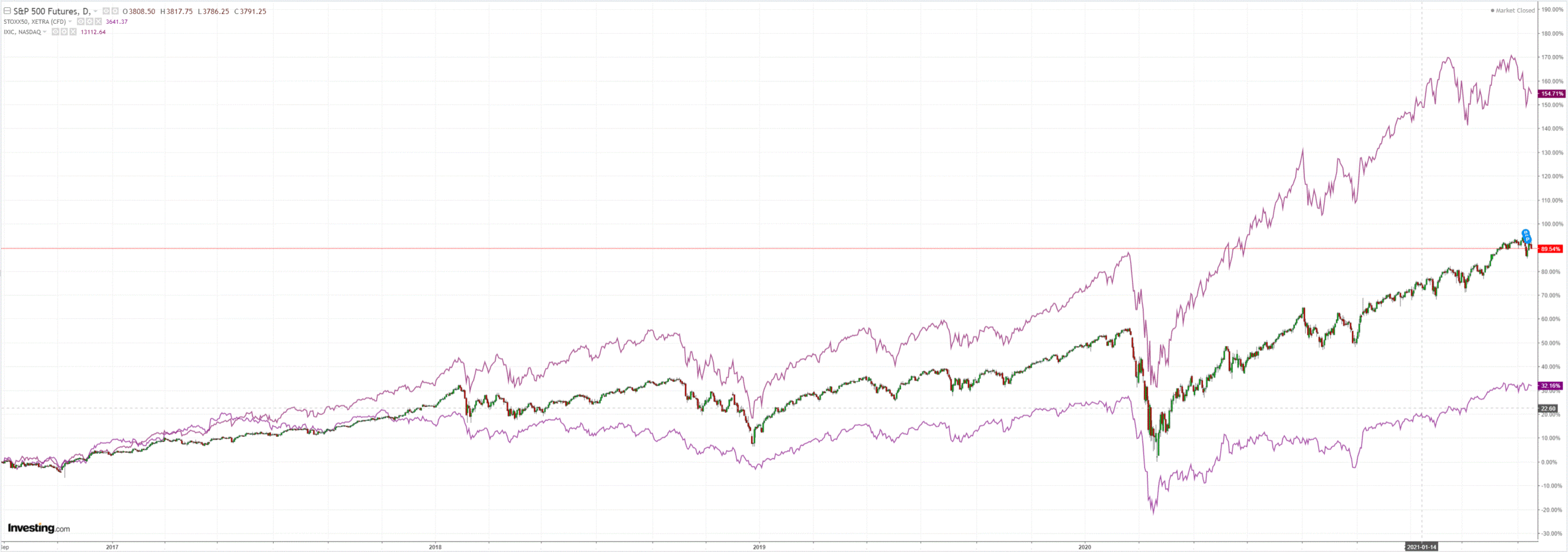
Westpac has the data wrap:
Event Wrap
US housing starts in April disappointed, falling 9.5% (est. -2%) to an annualised level of 1.569m (est. 1.700m), the result led by a 13.4% fall in single home starts. However, this should be seen in the context of considerable volatility caused by the February polar vortex and subsequent surge, but also the risk that the sector’s supply chain may be struggling to meet the surge in both demand and permits (which remained strong at 1.76m (est. 1.77m).
UK labour data was firm. March unemployment fell to 4.8% (est. unchanged at 4.9%), with a rise in employment of 84k (3m/3m, est. 50k). April jobless claims fell 15.5k, with March revised to -19.4k from a rise of +10k. The ONS said that employment remains 1.4% below pre-pandemic levels, and unemployment 0.8% above pre-pandemic levels, while furlough schemes remain in place.
Eurozone Q1 GDP contraction of -0.6% (-1.8%y/y) was confirmed as expected. The March trade surplus surprised to the downside, narrowing to EUR13bn from estimates of EUR18.7bn (prior 23.1bn) due to a larger rise in imports.
Event Outlook
Australia: The May Westpac-MI consumer sentiment survey was in the field over the week to 15 May. It will capture reactions to the Federal Budget – likely to be positive given stimulus measures and the over-arching aim of ‘going for growth’. Other developments also look likely to be mostly positive with another strong jobs report (the unemployment rate dropping to 5.6% in March), the ASX pushing towards new highs on a surge in iron ore prices, and housing markets continuing to boom (although this can be a ‘wedge’ issue for sentiment). The vaccine roll-out also looks to be gaining more traction. Concerns about worsening trade relations with China may take some of the gloss off. Following this, the ABS will publish the Q1 Wage Price Index. Reinstatements of Covid wage reductions are likely to be a factor again in the March quarter, masking underlying momentum in wages. We have pencilled in a 0.6%qtr rise in the headline WPI.
UK: Annual CPI inflation is expected to jump to 1.5% in April on base effects, with much of the economy shuttered this time last year. Monthly CPI growth is set to print at 0.6%.
Credit Suisse has a pretty good take on where we are at for forex:
The path of least resistance
In the absence of negative news or data, i.e. when the music stops, it appears the current natural path is for equities to edge higher, commodies likewise and the USD to ebb lower. As such the BBDXY has decisively broken prior support at 1116.90, EUR/USD has chewed through the former recent highat 1.2182 and USD/CAD pierced last week’s 1.2046 low. This brings levels of 1112, 1.2243 and 1.2000 into play for BBDXY, EUR/USD and USD/CAD respecvely. GBP has been an outperformed on this leg of USD weakness and the YTD high at 1.4237 is in clear and present danger. So far inital speculation that the Indian Covid variant may necessitate the push back of the ulmate UK reopening date of 21st June has not deterred the currency. Employment data released this morning was stronger than expected (+84kvs+50kexp3m/3m) though average weekly earnings was somewhat weaker. The next major event is tomorrow’s release of the FOMC minutes, but perhaps this will be less illuminang given that we have more recently heard from a plethora of FOMC speakers and, Kaplan aside, the message has been uniformly dovish. The market will keep watching data for a sign that the Fed’s state of relaxed inacvity cannot be sustained and likewise Fedspeak for any indication of a crack in their resolve, but for now it is proving fruitless and expensive to trade against the current path of least resistance.
Heavy NZD supply yesterday on crosses feels to have deterred the market from engaging with the USD lower trade across the commodity CCY space in the same way that it is approaching XAU or EUR, for example. I still think that AUDUSD and NZDUSD have catch-up to play here (the later should be significant through 73c) with the ‘supercycle’ theme and that both are under-owned given the back-drop, if you are to believe the Fed. Recent risk-off has seen poisoning drascally reduced. Expecting AUD dips to 7770 and NZD to 7205/10 to see fresh demand today, especially if the BBDXY can break. RBA mins were a dovish reiteration, which makes the AUD rally in Asia more impressive.
That seems reasonable to me in the short term. My base case remains weak AUD ahead but the risk case I have outlined in the shorter term in which a European recovery and rising EUR plays out before Chinese weakness and a falling CNY presents itself appears to be in play for now.
I will therefore take the opportunity of any bounces in the AUD to shift more assets offshore.

